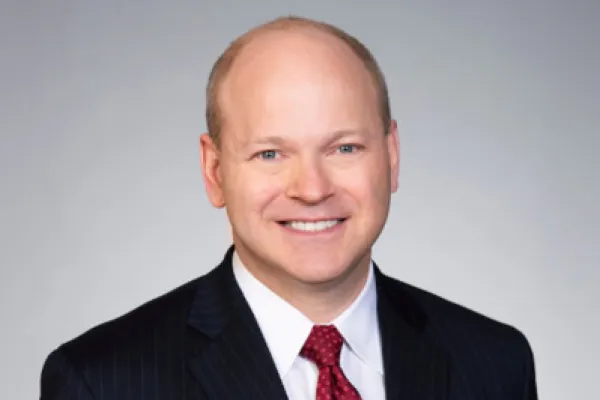[Part 2 of 2]
With the Covid-19 vaccination program gaining momentum in the U.S., an acceleration of growth is expected as the domestic economy eventually reopens in full. Rob Waldner, Chief Strategist and Head of Macro Research for Invesco Fixed Income, anticipates the economic recovery in the U.S. to surpass 7% growth in 2021. What he refers to as a “macro factor framework” at this point includes those strong growth expectations, plus benign inflation and easy monetary policy.
“That’s a good environment for financial markets overall in terms of liquidity and stability,” says Waldner. “It's also quite good for those things that are tied to growth, such as earnings and credit quality. In a world where treasuries have negative, real yields – we’re at about -0.6% in real yield for the 10-year Treasury in the U.S. – there are going to be some opportunities elsewhere in fixed income.”
Against that backdrop and to explore opportunities in private credit markets, II recently spoke with Scott Baskind, Head of Global Private Credit and Chief Investment Officer of Invesco’s Global Private Credit Platform, for part two of our series focused on how institutional investors can make their fixed income portfolios work harder and take advantage of the current scenario.
What does opportunity look like across the private universe of fixed income?
Scott Baskind: There has been a dramatic change around corporates from a confidence perspective, not just in the U.S., but globally. We see opportunity in private credit cutting across several themes. One is the more liquid end of the non-investment grade credit space in bank loans. In addition, we see opportunity in the direct lending and private debt arena, defined by originating lending to middle market companies, and in the distressed credit spectrum. We’ve seen significant recovery in many sectors and that has been supportive for credit assets and risk-based assets across the board.Tell us more on your view of the opportunity in bank loans.
Baskind: There’s a need for income among global investors, and that is prevalent in conversations with our investor base around the more liquid end of traditional bank loans. Bank loans are senior in the capital structure, secured by 100% of the assets of an underlying corporate. Their floating interest rates lead to some of the opportunities we see today. Historically, bank loans have been defensive in nature – we’ve experienced only two negative total return years in the past three decades, and that’s very much supported by the high credit spread above a floating rate component.It’s also important for investors to think about the opportunity in the broad bank loan space to mitigate and benefit from the interest rate environment we’re in today – and the one we might be moving toward over the next several years. Bank loans float up as interest rates increase, so from a duration standpoint they don’t share negative implications with fixed-rate instruments.
 Scott Baskind quote 1
Do you expect issuance of bank loans to continue to be strong?
Scott Baskind quote 1
Do you expect issuance of bank loans to continue to be strong?
Baskind: We do. Bank loans for M&A are one of the main ways U.S. and global corporates use the capital markets, and we expect that activity to continue to be robust. And for investors looking for capital protection, we continue to see strong inflows into bank loans as an asset class. That flow picture has changed dramatically with less political uncertainty in the aftermath of the U.S. general election and is also bolstered by the growing economy and concerns around an inflationary environment. In short, with income currently high against the backdrop of a floating rate, our global clients are eagerly engaging with bank loans.
Earlier you mentioned direct lending and distressed credit as also being areas of opportunity. What are you seeing that makes you believe that?
Baskind: Many illiquid private credit assets, such as direct lending, do not exhibit the same performance data as public markets, and as a result, can be a buffer for portfolios and for asset allocators. And as we’ve seen a tightening within the liquid end of bank loans, opportunities have emerged within direct lending as investors continue to move from the public markets into the private markets due to the search for income.In the distressed market, we’re keenly focused on small- to mid-cap companies, where growth is starting to present some operational challenges. Their challenges are less likely to result from the economic cycle and more likely to be caused by idiosyncratic events. These companies do not have the same buffer or liquidity as some large companies, and when idiosyncratic events arise they can easily find themselves with overleveraged balance sheets. In those situations, you can purchase them at very low prices in comparison to par and ultimately create the potential for very substantial returns for investors.
There is a view that the opportunity in distressed credit has passed. You obviously don’t agree with that from a mountaintop view – but is it true to any extent?
Baskind: It is quite true in the large liquid end of the market. Government intervention helped shore up liquidity and strengthen balance sheets. Many of the companies in the small- to mid-cap space are private equity-owned and did not qualify for some of the lending that was readily available to many larger companies. As a result, the need for liquidity and new lenders from small-caps and mid-caps provides investors with an ongoing opportunity in distressed credit.
How does your team think about asset allocation across private markets in different market cycles?
Baskind: We spend a significant amount of time thinking about asset allocation from a dynamic perspective, and that means across and through a full cycle. Historically, many investors have allocated to individual verticals, but interest is expanding around multi-strategy portfolios. The goal is to have the ability to successfully maneuver through the transitional periods within a cycle and between one cycle and the next. For example, having the more liquid end of the credit space carrying the day in the stronger end of the economic cycle and then being able to quickly and dynamically rebalance to add the less liquid components of credit as the strong end of a cycle winds down and perhaps heightened volatility emerges as we move into a recessionary period. In that scenario, investors are looking to capture returns and invest in volatility. Dynamism is required to move from the highly liquid end of the credit universe – bank loans and high yield bonds – to less liquid direct lending or private debt market, and then into distressed as opportunity presents itself. Ultimately, this may prove quite beneficial to investors.When seeking yield and taking on more risk in this type of environment what are the tradeoffs?
Baskind: From a credit risk perspective, that it’s important for investors to think about diversification across the risk spectrum. There is a need in general to move down in quality to pursue income. However, we prefer to think of it as being more selective in the opportunity sense. Within the non-investment grade space, for example, there are opportunities in BB and B, and also in CCC and C credit. In each one of those buckets, the bifurcation is quite significant, particularly as you move down in quality. We are constantly on the lookout for higher conviction opportunities to take on risk and for companies that have turned the corner. The economy is quite supportive of credit risk at this point, and the ability to invest in companies that have come out the depths of the economic cycle might help in terms of taking on risk. The environment we’re in today will not last forever and being able to move back and forth across the liquidity spectrum – which also dictates risk in some respects – is going to be quite critical. The health of the underlying corporates will ultimately dictate how much risk investors should be willing to take.How is ESG a factor in the private credit markets?
Baskind: Our philosophy is that ESG considerations are credit risks to a corporate issuer. We began evaluating companies for ESG in the private space about 10 years ago, and today we rate well over 800 unique issuers. What’s quite different about the private markets versus the public markets from an ESG perspective is the lack of readily available information on private companies. Part of our strength as a private credit team at Invesco is derived from speaking with management teams, doing the diligence on thousands of companies and rating them both from a credit risk standpoint and through the lens of ESG factors. That represents a significant improvement in our underwriting standards over time.Disclosure
This article is for US Institutional Investor Use and accredited investors in Canada Only. Accredited Investors as defined under National Instrument 45-106. Content was developed in March 2021. This is for informational purposes only and is not an offer to buy or sell any financial instruments. As with all investments there are associated inherent risks. This should not be considered a recommendation to purchase any investment product. Please obtain and review all financial material carefully before investing. The opinions expressed in this article are those of the authors and are based on current market conditions and are subject to change without notice. These opinions may differ from those of other Invesco investment professionals.
Invesco Advisers Inc. is an investment adviser; it provides investment advisory services to individual and institutional clients and does not sell securities. NA5850
Canada: This article is used in Canada by Invesco Canada Ltd., 120 Bloor Street East, Suite 700, Toronto, Ontario, M4W 1B7.
US: Invesco Advisers, Inc., Two Peachtree Pointe, 1555 Peachtree Street N.E., Atlanta, Georgia, 30309, USA.






